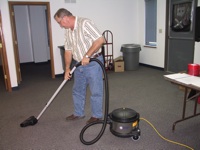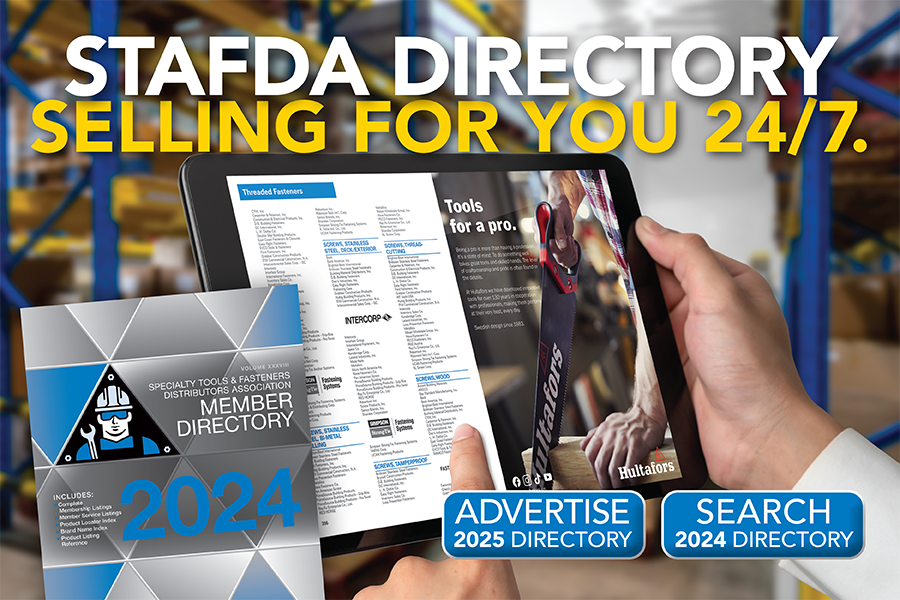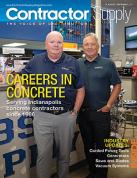Online Exclusive: Online Lead RRP Training Program Gives Contractors the Ability to Comply with Convenience
By Paul R. Miller, Vice President / General Manager, Nilfisk-Advance America, Inc.
 More than 80 million homes in the United States contain traces of lead, a deadly element that if exposed to, even in small amounts, can cause serious effects on the brain, nervous, reproduction, cardiovascular, muscular, skeletal, renal, and blood systems.
More than 80 million homes in the United States contain traces of lead, a deadly element that if exposed to, even in small amounts, can cause serious effects on the brain, nervous, reproduction, cardiovascular, muscular, skeletal, renal, and blood systems.
Lead is often absorbed through contaminated dust in older buildings and through paint chips easily ingested by small children, putting them at high risk for lead poisoning. In 2008, in order to curb the occurrence of lead-related diseases, the EPA issued 40 CR, Part 745, Subpart E, also known as the Lead RRP.
In effect since April 22, 2010, the new rule requires contractors who perform renovations, repair or painting projects on homes or schools built before 1978- the year lead paint was banned- to be licensed and become “EPA Lead–Safe Certified” in order to prevent lead contamination.
As a result, the RRP has sparked a fury amongst contractors to hurry up and fulfill the new requirements, or pay a hefty fine; and while there are approximately 240 EPA-accredited training providers across the country offering the certification, which includes 6 hours of class time and a 2-hour hands-on skills assessment, the number of firms seeking certification is well over 200,000.
To help alleviate the long lines of contractors waiting to be certified, the State of Kansas approached ComplyAbility (Work Comp Associates, LLC), a non-profit web-based human resources, regulatory compliance, training, testing and performance tracking software company to develop a program that addressed the Lead RRP requirements.
For years, ComplyAbility has assisted companies with training on a variety of topics related to state and federal regulations, but they were unaware of the Lead RRP rule when the state’s Building Industry Association contacted them about a year ago.
“Fortunately we have strong web capabilities to support the requirements of the Lead RRP class that are very specific,” said Tom Knight, CEO of Work Comp Associates, LLC. “With only 1 other accredited online Lead RRP in the country, ComplyAbility’s program, www.leadsafeonline.com, offers not just convenience, but the ability for contractors all over the country to take the class on their own schedule. We can also accommodate an infinite amount of students, as opposed to live classes that easily hit their 20-person capacity.”
As required by the EPA, ComplyAbility’s online training includes 17 different modules, featuring descriptive text, photos and videos along with complete audio. Students have the ability to ask questions of a certified trainer at any time while proceeding through the class and can save their work at any step of the program to return later to complete.
Each module is followed by a quiz, with a 30-question final exam at the conclusion of the course; however, the certification process doesn’t end there.
Following the online portion of the class, students move on to the mandatory hands-on skills assessment, taught by 10 of ComplyAbility’s certified trainers, available to firms all over the country.
“We’ll often partner with an entity like a lumberyard or paint store that sponsor RRP certification for their customers and staff in order to alleviate some of the costs. Once they pass the online portion, we’ll make arrangements to travel to their facility or meeting location, anywhere in the U.S,” said Knight.
The main purpose of the 2 hour skills assessment is for students to demonstrate the work practices they learned about during the online course. They will be required to, establish interior and exterior containment, perform interior and exterior final cleaning, properly dispose of waste, and keep dust levels low using a HEPA filter vacuum cleaner.
“HEPA vacuum cleaners are a critical part of the Lead RRP,” said Knight. “The EPA requires they be used to clean walls, furniture, and even workers before they leave the work area. They can also be used to collect dust at the source of sanding and grinding with vacuum-assisted power tools. We even teach our students about safe disposal of waste by using the vacuum cleaner to remove excess air from plastic bags filled with lead debris.”
ComplyAbility relies on Nilfisk GD930 HEPA Vacuums, which were donated by the industrial vacuum manufacturer to be used during hands-on training. While the EPA does not recommend any HEPA vacuums, they do discourage against the use of lower cost shop-style vacuums retrofitted with a HEPA filter in place of the original basic filter.
The GD930 HEPA Vacuum meets the EPA’s definition of a HEPA vacuum cleaner, capturing 99.97% of particulate, down to and including 0.3 microns. The vacuum is also available with a carpet beater bar floor nozzle, another EPA requirement that agitates carpet fibers to collect embedded lead dust.
Upon conclusion of both the online and hands-on training, ComplyAbility processes all paperwork and issues the firm or individual their EPA Lead-Safe Certification, allowing them to legally renovate older homes and schools. The entire ComplyAbility program is offered for just under $200, which is in line with the national average cost of Lead RRP certification classes, but contractors must also apply for a separate Lead RRP license through the EPA, which carries an additional $300 fee.
So, while the Lead RRP requires contractors to invest in both equipment and training, the cost not to comply can result in fines upwards of $37,500 per violation, per day; not to mention potential private lawsuits brought on by homeowners. Indeed, initial costs will be a heavy burden for some, but considering the deadly effects of lead poisoning, it’s a small price to pay.
For more information on the EPA’s Lead RRP, visit
www.epa.gov/lead/pubs/renovation.htm.
For information on ComplyAbility’s online training program, visit www.leadsafeonline.com
HEPA Vacuums Play Critical Role in Lead RRP
On April 22, 2010, the Environmental Protection Agency’s Lead RRP (40 CFR, Part 745, Subpart E) went into effect. The new rule requires contractors performing renovation, repair, and painting projects that disturb lead-based paint in homes, child care facilities, and schools built before 1978 to be certified and follow specific work practices to prevent lead contamination.
Among these required work practices are the use of a HEPA-filtered vacuum cleaner, to minimize dust and thoroughly clean the work area.
According to the rule:
• Walls must be cleaned starting at the ceiling and working down to the floor by either vacuuming with a HEPA vacuum or wiping with a damp cloth.
• Remaining surfaces are to be cleaned by thoroughly vacuuming all remaining surfaces and objects in the work area, including furniture and fixtures, with a HEPA vacuum. The HEPA vacuum must be equipped with a beater bar when vacuuming carpets and rugs.
• The use of machines that remove lead-based paint through high speed operation such as sanding, grinding, power planing, needle gun, abrasive blasting, or sandblasting is prohibited unless such machines are used with HEPA exhaust control.
So, what does the EPA mean by a HEPA vacuum cleaner? In 40 CFR 745.83, the EPA states:
“HEPA vacuum means a vacuum cleaner which has been designed with a high efficiency particulate air (HEPA) filter as the last filtration stage. A HEPA filter is a filter that is capable of capturing particles of 0.3 microns with 99.97% efficiency. The vacuum cleaner must be designed so that all the air drawn into the machine is expelled through the HEPA filter with none of the air leaking past it”
For more information on HEPA Vacuum Cleaners for the Lead RRP, visit www.nilfiskcfm.com/vacuum-applications/EPALeadRRP-hepa-vacuum.aspx or call 1-800-645-3475.















